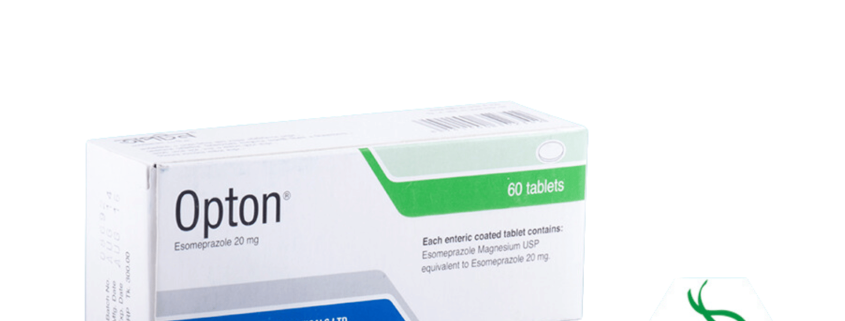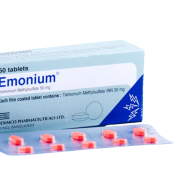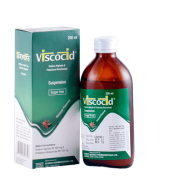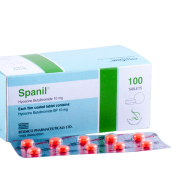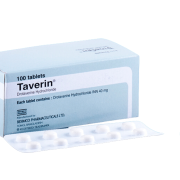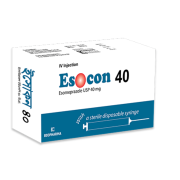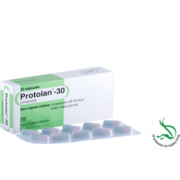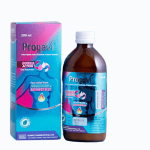Opton
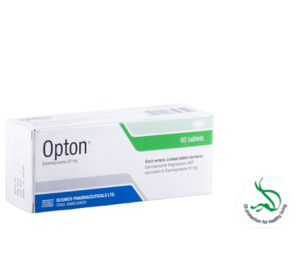
Generic Name: Esomeprazole
Dosage Form: Tablet
TG Name: Gastrointestinal
1. What Opton® is and what it is used for?
Esomeprazole is the S-isomer of Omeprazole. It reduces gastric acid secretion through a specific targeted mechanism of action. It is a specific inhibitor of the acid pump in the parietal cell.
2. Before you take Opton®
Patients with known hypersensitivity to any component of the formulation.
Taking other medicines
Esomeprazole inhibits gastric acid secretion. Therefore, Esomeprazole may interfere with the absorption of drugs where gastric pH is an important determinant of bioavailability (eg, Ketoconazole, Iron salts and Digoxin).
Pregnancy and breast-feeding
If you are pregnant, think you may be pregnant or are planning to have a baby, ask your doctor or pharmacist for advice before taking this medicine. Your doctor will decide whether you can take Opton® during this time. It is not known if Opton® passes into breast milk. Therefore, you should not take Opton® if you are breastfeeding.
3. How to take Opton®?
Opton® Tablet/Capsule
- Gastroesophageal Reflux Disease (GERD):
Healing of Erosive Esophagitis – 20 mg or 40 mg once daily for 4-8 weeks. The majority of patients are healed within 4 to 8 weeks. For patients who do not heal after 4 to 8 weeks, an additional 4 to 8 weeks of treatment may be considered.
Maintenance of Healing of Erosive Esophagitis: 20mg once daily. It is noted that controlled studies did not extend beyond six months.
Symptomatic Gastroesophageal Reflux Disease (Heartburn): 20 mg once daily for 4 weeks. If symptoms do not resolve completely after 4 weeks, an additional 4 weeks of treatment may be considered.
Pediatric GERD: 12-17 years old: 20 mg or 40 mg once daily for up to 8 weeks. 1-11 years old: for sort treatment of symptomatic GERD- 10 mg once daily up to 8 weeks. For erosive esophagitis- 10 mg once daily up to 8 weeks when weight is less than 20 kg. 10 mg or 20 mg once daily up to 8 weeks when weight is equal to or more than 20 kg. - Risk Reduction of NSAID-Associated Gastric Ulcer: 20 mg or 40 mg once daily up to 6 months.
- H. pylori Eradication to Reduce the Risk of Duodenal Ulcer Recurrence: Triple therapy- Esomeprazole 40 mg once daily for 10 days + Amoxicillin 1000 mg twice daily for 10 days + Clarithromycin 500mg for twice daily for 10 days.
- Pathological Hypersecretory Conditions Including Zollinger-Ellison Syndrome: 40mg twice daily. The dosage of Esomeprazole in patients with pathological hypersecretory conditions varies with the individual patient. Dosage regimens should be adjusted to individual patient needs. Doses up to 240 mg daily have been administered.
Opton® 40 IV Injection
The recommended adult dose in GERD with Erosive Esophagitis is either 20 or 40 mg Esomeprazole given once daily by intravenous injection (no less than 3 minutes) or intravenous infusion (10 to 30 minutes).
Pediatric dose (1 to 11 years old): Short term treatment of symptomatic GERD: 10 mg once daily for up to 8 weeks.
Healing of erosive esophagitis: Weight Preparations for Use and Administration of Opton® 40 IV Injection: A solution for intravenous infusion is prepared by first reconstituting the contents of one vial with 5 ml of 0.9% Sodium Chloride BP and further diluting the resulting solution to a final volume of 50 ml. The resultant concentration after diluting to a final volume of 50 ml is 0.8 mg/ml.
20 mg dose: Withdraw 25 ml of the final solution and administer as an intravenous infusion over 10 minutes to 30 minutes. 10 mg dose: Withdraw 12.5 ml of the final solution and administer as an intravenous infusion over 10 minutes to 30 minutes.
4. Possible side effects
In general, Esomeprazole is well tolerated in both short and long-term use. Common adverse effects are headache and diarrhoea. Other side effects include nausea, flatulence, abdominal pain, constipation, and dry mouth.
5. How to store Opton®?
Store in a cool and dry place, away from light. Keep out of reach of children.

